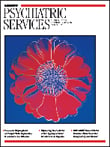Letter
Legal Consequences of Seclusion and Restraint
To the Editor: We would like to comment on the recent letters in the April ( 1 ) and July ( 2 ) issues of Psychiatric Services regarding the feasibility of eliminating the use of restraint and seclusion. In our judgment, developments in the law compel hospital administrators and clinicians to strive for elimination in order to minimize the significant legal risks associated with each use of restraint and seclusion.
In 1982 the U.S. Supreme Court ruled that the use of restraint is a drastic deprivation of personal liberty, that "[t]he right to be free from undue bodily restraint is the core of the liberty interest protected by the Due Process Clause," and that the use of any such intervention must reflect the exercise of professional judgment ( 3 ). At the time of the court's decision, restraint and seclusion were widely used to control the behavior of people with mental health conditions, and professional judgment appeared to embrace these practices.
Much has changed in the quarter century since the Supreme Court considered the issue, and what constitutes the exercise of professional judgment has evolved to reflect a growing consensus that the use of restraint and seclusion is dangerous, arbitrary, and nearly always avoidable. Researchers and clinicians have chronicled the significant physical and psychological risks—including death, disabling physical injuries, and significant trauma—inherent in each use of these interventions. The policies of virtually every national mental health advocacy and professional organization state that restraint and seclusion are safety interventions of last resort.
In addition, many effective, inexpensive alternatives to restraint and seclusion have demonstrated that these practices can be significantly reduced, which undermines their legitimacy in a treatment setting. The use of restraint and seclusion correlates with the beliefs of the organization's leadership and the facility's culture far more than with any clinical factor ( 4 ).
A single restraint episode can be subjected to judicial review of the determination by staff that an emergency warranted its use, and these cases can result in damage awards exceeding $1 million ( 5 ). The efforts of facility management may be scrutinized in light of the well-documented success of inexpensive, replicable tools that prevent use of restraint and seclusion. Legal consequences may include not only money damages (compensatory and punitive) but also administrative sanctions (such as the loss of Medicaid and Medicare certification) and criminal prosecution. Moreover, legal challenges to these practices consume enormous facility resources no matter what the ultimate outcome, and the impact on its reputation and staff morale linger long after the legal dust settles.
The issues we describe are thoroughly examined in our Risk Management Guide to Restraint and Seclusion, which is available without charge on the Web site of the National Association of State Mental Health Program Directors (www.nasmhpd.org). Legal challenges to restraint and seclusion will increase, and comprehensive, concrete action to prevent these practices will benefit both consumers and service providers.
1. Liberman RP: Elimination of seclusion and restraint: a reasonable goal? Psychiatric Services 57:576, 2006Google Scholar
2. McLoughlin KA, Geller JL: The recovery model and seclusion and restraint. Psychiatric Services 57:1045, 2006Google Scholar
3. Youngberg v Romeo, 457 US 307, 316 (1982)Google Scholar
4. Fisher W: Restraint and seclusion: a review of the literature, American Journal of Psychiatry 151:1584-1591, 1994Google Scholar
5. Davis v Rennie, 264 F3rd 86 (1st Cir 2000), cert denied, 535 US 1053 (2002)Google Scholar



